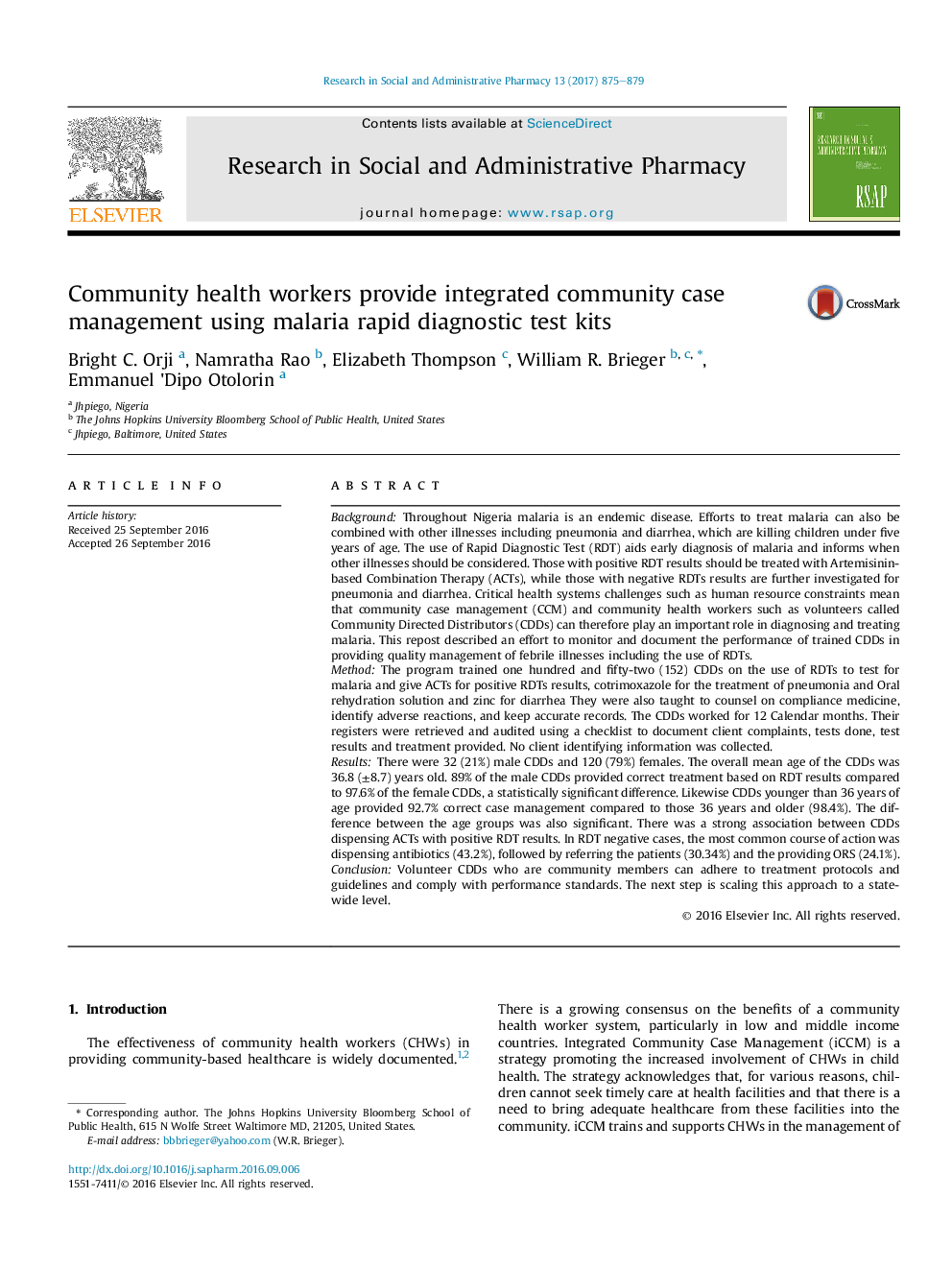| Article ID | Journal | Published Year | Pages | File Type |
|---|---|---|---|---|
| 5551229 | Research in Social and Administrative Pharmacy | 2017 | 5 Pages |
BackgroundThroughout Nigeria malaria is an endemic disease. Efforts to treat malaria can also be combined with other illnesses including pneumonia and diarrhea, which are killing children under five years of age. The use of Rapid Diagnostic Test (RDT) aids early diagnosis of malaria and informs when other illnesses should be considered. Those with positive RDT results should be treated with Artemisinin-based Combination Therapy (ACTs), while those with negative RDTs results are further investigated for pneumonia and diarrhea. Critical health systems challenges such as human resource constraints mean that community case management (CCM) and community health workers such as volunteers called Community Directed Distributors (CDDs) can therefore play an important role in diagnosing and treating malaria. This repost described an effort to monitor and document the performance of trained CDDs in providing quality management of febrile illnesses including the use of RDTs.MethodThe program trained one hundred and fifty-two (152) CDDs on the use of RDTs to test for malaria and give ACTs for positive RDTs results, cotrimoxazole for the treatment of pneumonia and Oral rehydration solution and zinc for diarrhea They were also taught to counsel on compliance medicine, identify adverse reactions, and keep accurate records. The CDDs worked for 12 Calendar months. Their registers were retrieved and audited using a checklist to document client complaints, tests done, test results and treatment provided. No client identifying information was collected.ResultsThere were 32 (21%) male CDDs and 120 (79%) females. The overall mean age of the CDDs was 36.8 (±8.7) years old. 89% of the male CDDs provided correct treatment based on RDT results compared to 97.6% of the female CDDs, a statistically significant difference. Likewise CDDs younger than 36 years of age provided 92.7% correct case management compared to those 36 years and older (98.4%). The difference between the age groups was also significant. There was a strong association between CDDs dispensing ACTs with positive RDT results. In RDT negative cases, the most common course of action was dispensing antibiotics (43.2%), followed by referring the patients (30.34%) and the providing ORS (24.1%).ConclusionVolunteer CDDs who are community members can adhere to treatment protocols and guidelines and comply with performance standards. The next step is scaling this approach to a state-wide level.
